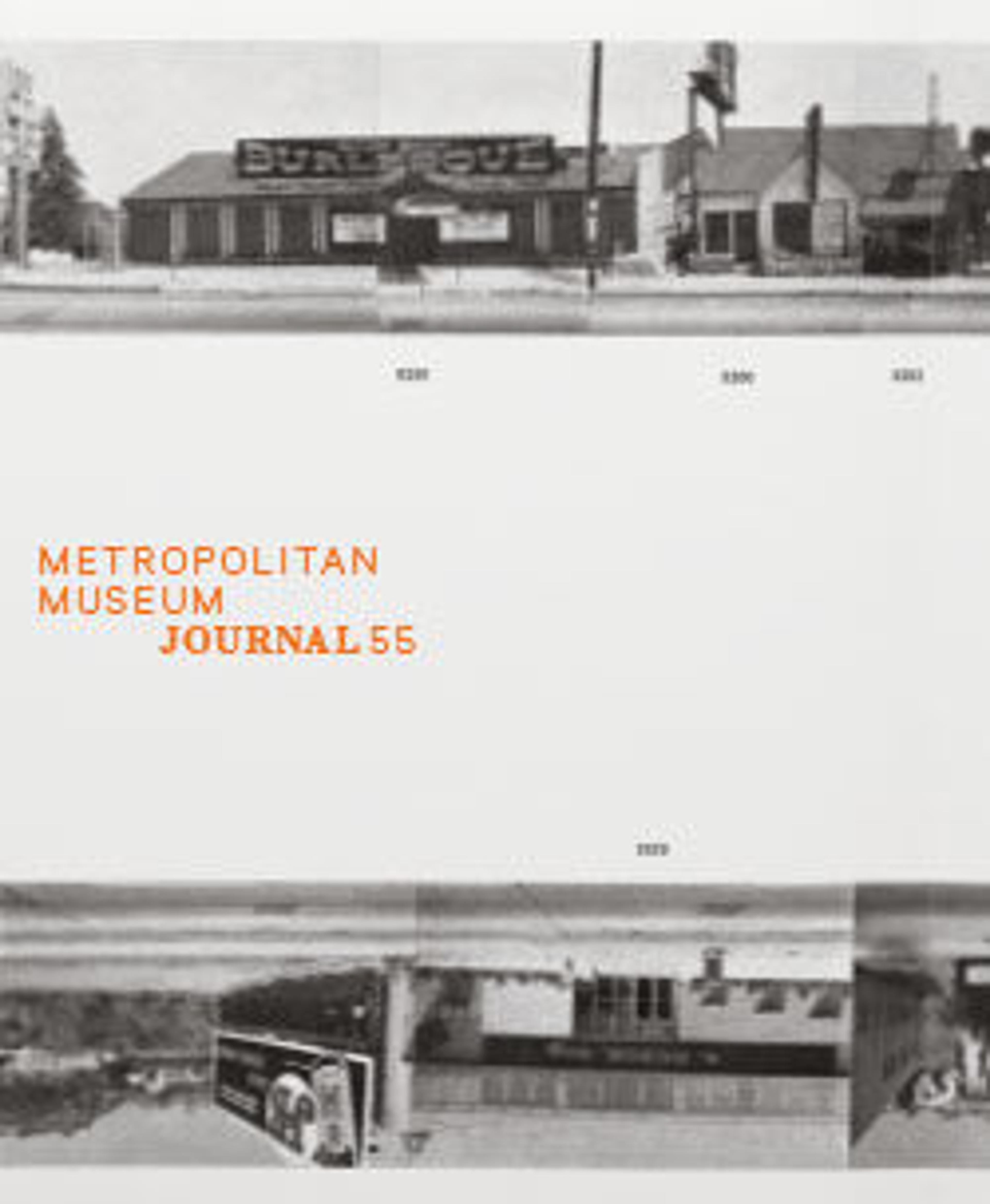Pendant with the head of Pazuzu
Although small, this head and neck cast in bronze is immediately recognizable as a ferocious demonic creature from ancient Mesopotamia. The bulging eyes, bulbous forehead protrusions, and short beard that rings the snarling open mouth, atop an incongruously thin neck, are unmistakable features of Pazuzu, the king of evil wind demons. Pazuzu was associated with the cold winds that blew into present-day Iraq from the Zagros Mountains on the border with Iran, which were thought to bring illness. While not a benevolent figure on his own, he could be used to deflect the dangerous attentions of Lamashtu, a powerful and violent demon. A plaque displayed in the museum was used as an amulet against Lamashtu, and depicts her as a demon combining human and animal features (1984.348). When wearing a pendant like this head threaded on a necklace, the orientation of the suspension loop would ensure that the demon’s gaze was directed outward. The wearer could thus aim the demon’s countenance at whatever dangers she or he faced in the course of daily life.
Pazuzu appears on many other plaques and amulets, both as a complete figure with wings and scorpion tail, as well as in abbreviated form like this pendant. The earliest image of Pazuzu dates to the late eighth century B.C., relatively late in the history of demonic imagery in Mesopotamia. This was a period when the Assyrian royal administration was intensely focused on collecting magical knowledge and studying the supernatural world, and priests and exorcists were actively engaged in codifying these systems of knowledge. As a result, a rich variety of magical images and texts from Assyria in this period have survived in the material record.
Pazuzu appears on many other plaques and amulets, both as a complete figure with wings and scorpion tail, as well as in abbreviated form like this pendant. The earliest image of Pazuzu dates to the late eighth century B.C., relatively late in the history of demonic imagery in Mesopotamia. This was a period when the Assyrian royal administration was intensely focused on collecting magical knowledge and studying the supernatural world, and priests and exorcists were actively engaged in codifying these systems of knowledge. As a result, a rich variety of magical images and texts from Assyria in this period have survived in the material record.
Artwork Details
- Title: Pendant with the head of Pazuzu
- Period: Neo-Assyrian
- Date: ca. 8th–7th century BCE
- Geography: Mesopotamia
- Culture: Assyrian
- Medium: Bronze
- Dimensions: 1 11/16 × 1 1/16 × 1 1/16 in. (4.3 × 2.65 × 2.65 cm)
- Credit Line: Purchase, Norbert Schimmel and Robert Haber Gifts, and funds from various donors, 1993
- Object Number: 1993.181
- Curatorial Department: Ancient West Asian Art
More Artwork
Research Resources
The Met provides unparalleled resources for research and welcomes an international community of students and scholars. The Met's Open Access API is where creators and researchers can connect to the The Met collection. Open Access data and public domain images are available for unrestricted commercial and noncommercial use without permission or fee.
To request images under copyright and other restrictions, please use this Image Request form.
Feedback
We continue to research and examine historical and cultural context for objects in The Met collection. If you have comments or questions about this object record, please contact us using the form below. The Museum looks forward to receiving your comments.
